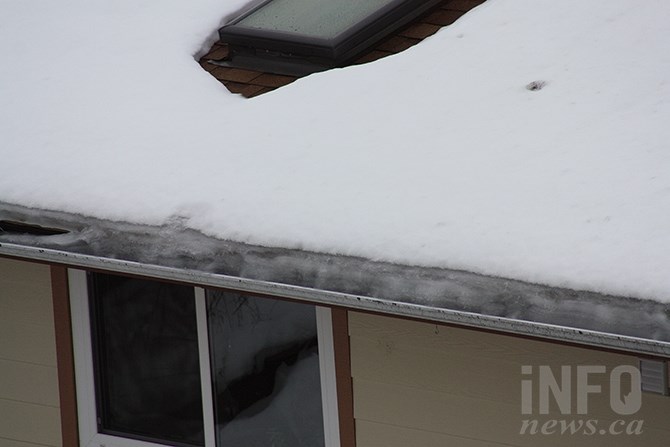Unexpected winter weather problem for homeowners in Okanagan, Kamloops

With the large accumulation of snow, and now moderating temperatures, homeowners should be aware of the possibility of damage to their roofs caused by ice damming.
Freezing and melting of ice creating condensation is an ideal environment for ice dams to form.
If an ice dam gets into roofs, soffits or drains — and the water freezes — it can break, rip or tear the exterior of a home Odell Burnett, co-owner of Premium Roofing in Kelowna, said.
He said although this is a common headache for homeowners to experience, it has been amplified this year.
“We’ve received between 600 to 700 calls within the last two weeks, we had a quarter of that number of calls last year,” Burnett said. “It was the perfect storm. It’s all about the ideal conditions and temperature.”
Sonnet Insurance explained on its website an ice dam occurs when there’s a build-up of ice along a roof and the warmth from the house melts the ice. The half-melted snow flows down the eaves and freezes again, preventing proper drainage.
Ice dams can cause water damage from leaks into walls, ceilings and attics. The extra water can also cause rot and weaken the roof to the point of it collapsing.
“Ice damming can do interior damage, it can leak in and damage by the ceiling, walls, doors, and windows,” Burnett said.
Ice dams are caused by fluctuating temperatures between zero because there has to be water flowing before there’s ice damming.
In an extreme case of ice damming, the roof would have to be replaced.
READ MORE: How to weather the weather: 12 things you might not know about surviving winter
So, how can homeowners prevent an ice dam?
“It can be prevented by doing a heat trace, having proper ventilation, ice and water shields, and monitoring it, but sometimes it does have to be removed,” Burnett said.
It’s important to ensure the roof doesn’t get warmer than 0 Celsius in the winter, ensure there isn’t too much snow on the roof and seal any air leaks coming from the attic, Sonnet said.
Homeowners can pinpoint problem spots by watching for areas of the roof that melt first, then add insulation or improve the ventilation in that area or enlist the help of a roofing contractor to help winter-proof the home.
To contact a reporter for this story, email Emily Rogers or call 250-718-0428 or email the editor. You can also submit photos, videos or news tips to the newsroom and be entered to win a monthly prize draw.
We welcome your comments and opinions on our stories but play nice. We won't censor or delete comments unless they contain off-topic statements or links, unnecessary vulgarity, false facts, spam or obviously fake profiles. If you have any concerns about what you see in comments, email the editor in the link above.



